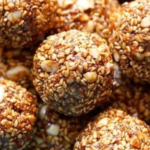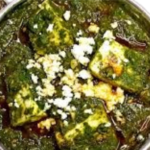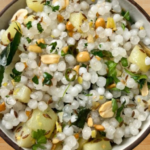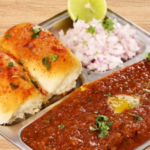Dal Makhani
Dal Makhni, a revered gem in the crown of Indian cuisine, is a dish that transcends borders with its rich and creamy texture, tantalizing spices, and the warmth it brings to the table. This blog post will take you on a culinary adventure through the intricacies of preparing Dal Makhni, providing not only a step-by-step recipe but also answers to frequently asked questions (FAQs) to ensure your journey to mastering this dish is both enjoyable and successful.
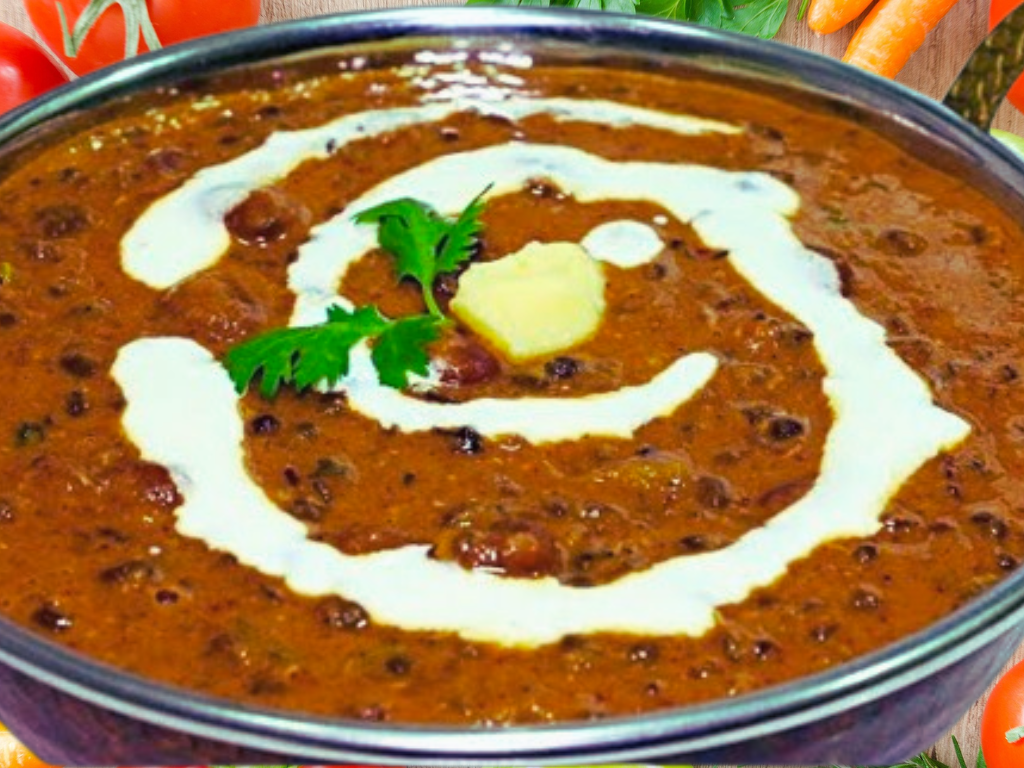
About Dal Makhani recipe
Dal Makhni’s roots can be traced back to the kitchens of Punjab, where it was initially prepared by combining black urad dal (whole black gram) with red kidney beans. Traditionally, it was slow-cooked over an open flame for hours, allowing the flavors to meld and intensify. Over time, this hearty dish gained popularity and found its way into the menus of Indian restaurants worldwide.
Ingredients of Dal Makhani
Before we delve into the cooking process, let’s acquaint ourselves with the star-studded cast of ingredients that make Dal Makhni an unforgettable culinary experience.
1. Black Urad Dal (Whole Black Gram) – 1 cup
The heart of Dal Makhni lies in the use of black urad dal, which brings a rich, earthy flavor and a creamy texture to the dish.
2. Red Kidney Beans – 1/4 cup
Adding a delightful bite to the dish, red kidney beans contribute both texture and nutritional value to the overall composition.
3. Tomatoes – 1 cup (pureed)
Tomatoes provide the necessary acidity to balance the richness of the lentils, and a smooth puree blends seamlessly into the curry.
4. Butter – 1/4 cup
The buttery goodness in Dal Makhni is non-negotiable. Use unsalted butter to have better control over the dish’s salt content.
5. Cream – 1/2 cup
To achieve that velvety texture and luxurious taste, the addition of cream is indispensable. Opt for heavy cream for a truly indulgent experience.
6. Spices:
- Cumin Seeds – 1 teaspoon
- Coriander Powder – 1 tablespoon
- Red Chili Powder – 1/2 teaspoon (adjust according to spice preference)
- Garam Masala – 1 teaspoon
- Turmeric Powder – 1/2 teaspoon
7. Ginger – 1 tablespoon (finely chopped)
Freshly minced ginger adds a zesty kick, balancing the richness of the lentils and enhancing the overall flavor profile.
8. Garlic – 1 tablespoon (minced)
Garlic complements the ginger, infusing the dish with a robust and aromatic quality.
9. Salt – to taste
Adjust the salt according to your preference, keeping in mind the salt content in other ingredients like butter and canned tomatoes.
10. Water – as needed
To cook the lentils and beans to perfection, you’ll need an adequate amount of water. The quantity may vary based on your cooking method.
How to make Dal Makhani
Cooking Process
Step 1: Soaking the Lentils and Beans
Begin by rinsing the black urad dal and red kidney beans thoroughly. Soak them in enough water for at least 6-8 hours or overnight. This softens the lentils and reduces the overall cooking time.

Step 2: Pressure Cooking
After soaking, drain the water and transfer the urad dal and kidney beans to a pressure cooker. Add enough fresh water, a pinch of salt, and pressure cook until they are tender and easily mashable. The exact time may vary, but it generally takes about 20-25 minutes.
Kadai Paneer RecipeStep 3: Preparing the Tomato Base
Take another pan and heat up one tablespoon of butter. Add cumin seeds and let them splutter. Add finely chopped ginger and minced garlic, sauté until fragrant. Stir in the coriander powder, red chili powder, and turmeric powder. Add the tomato puree and cook until the mixture releases oil, indicating it’s well-cooked.

Step 4: Combining Lentils and Tomato Base
Once the lentils and beans are cooked, add them to the tomato base. Mix well, ensuring the lentils absorb the flavors of the spices. Allow it to simmer on low heat, letting the ingredients meld together.
Step 5: Introducing Butter and Cream
The pièce de résistance – add the remaining butter and cream. Stir well to incorporate these indulgent elements, elevating the dish to a creamy, heavenly delight. Let it simmer for an additional 10-15 minutes.

Step 6: Garnishing Dal Makhani
Sprinkle garam masala over the simmering Dal Makhni for that final touch of aromatic perfection. Adjust the seasoning as needed, and let it simmer a bit longer until the flavors have fully developed.
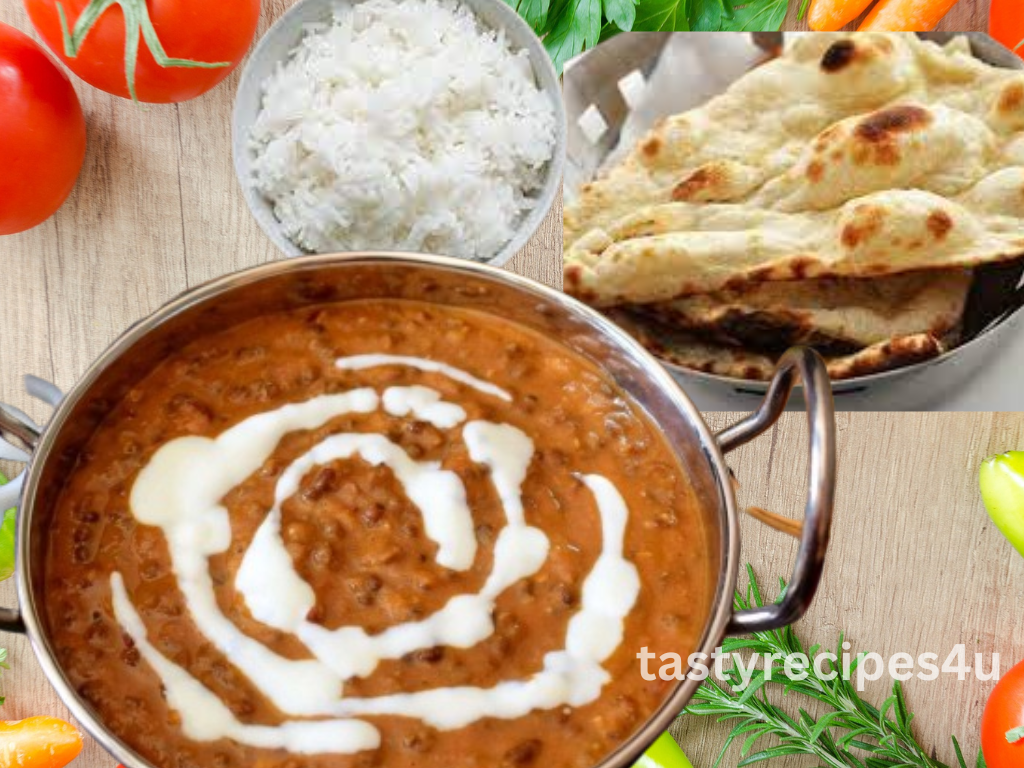
Step 7: Serve Hot
Garnish with fresh coriander leaves and serve the Dal Makhni hot, paired with naan, roti, or steamed rice.
Frequently Asked Questions (FAQs)
Q1: Can I use canned lentils for Dal Makhni?
A1: While it’s preferable to use dried lentils for the best texture and flavor, you can use canned lentils as a time-saving alternative. Rinse them thoroughly to remove excess salt and adjust the seasoning accordingly.
Q2: Is Dal Makhni a spicy dish?
A2: The spice level can be adjusted to your preference. If you enjoy a milder flavor, reduce the amount of red chili powder. Conversely, for a spicier kick, feel free to increase the quantity.
Q3: Can I make Dal Makhni without cream?
A3: Yes, you can substitute cream with milk or yogurt for a lighter version. While it might alter the richness slightly, it still yields a delicious and healthier alternative.
Q4: Can I prepare Dal Makhni in advance?
A4: Absolutely! In fact, Dal Makhni tends to taste even better the next day as the flavors continue to meldWhen ready to serve, reheat it over the stovetop in an airtight container kept in the refrigerator.
Q5: What are the ideal accompaniments for Dal Makhani?
A5: Dal Makhni pairs wonderfully with naan, roti, or steamed rice. Enhance the experience with a side of raita (yogurt with spices) and pickles.
Q6: What are the Ingredients of Dal Makhani?
A6: Dal Makhani typically consists of whole black lentils, red kidney beans, butter, cream, onions, tomatoes, ginger-garlic paste, green chilies, spices (garam masala, cumin, chili powder, turmeric, coriander), and salt..
Conclusion
Mastering the art of Dal Makhni is not just about following a recipe; it’s about embracing the slow-cooking process, understanding the nuances of flavors, and creating a dish that resonates with the soul. With this comprehensive guide, you are equipped to embark on a culinary journey that promises not just a meal, but an experience – a symphony of flavors that celebrates the rich tapestry of Indian cuisine. So, roll up your sleeves, gather your ingredients, and let the aromatic magic of Dal Makhni unfold in your kitchen.

